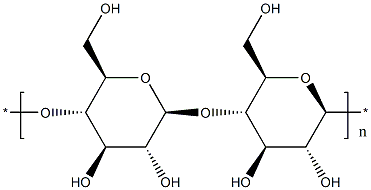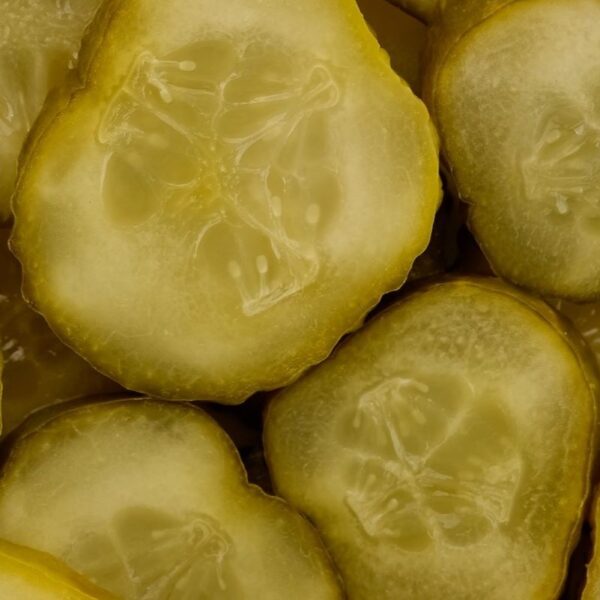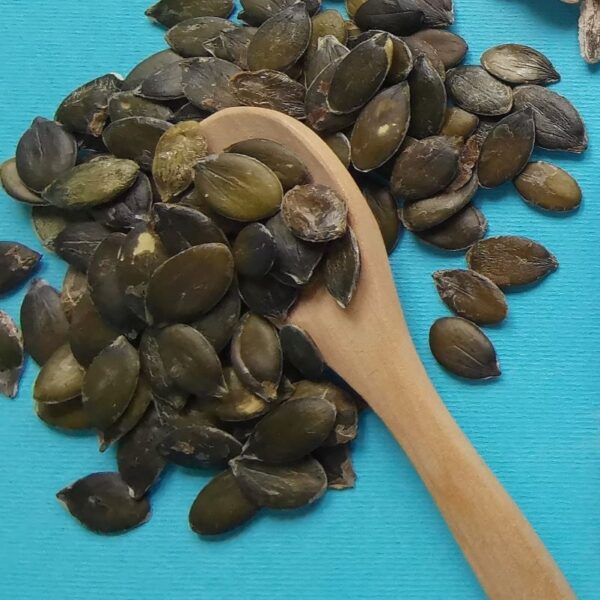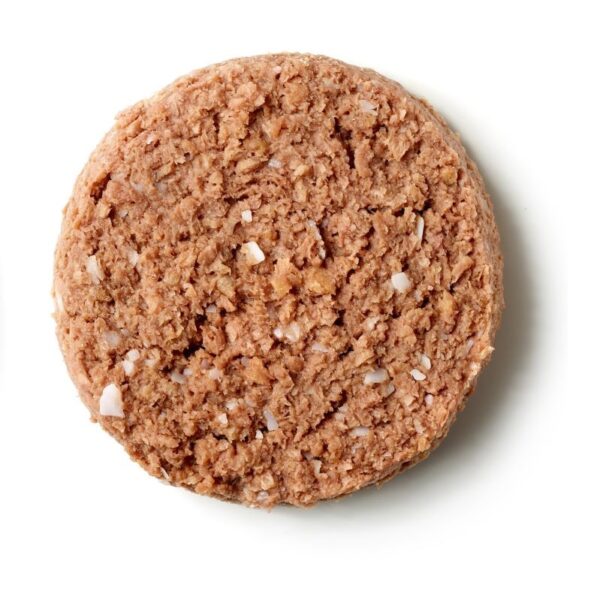Microcrystalline cellulose (MCC) consists of a specific segment of the cellulose molecule, which is chemically snipped off and isolated into a powder. It is a purified, partially depolymerized cellulose prepared by treating alpha-cellulose, obtained as a pulp from fibrous plant material with mineral acids.
While allergic reactions can’t be ruled out, microcrystalline cellulose is considered a safe and effective ingredient that can be used to improve the texture, mouthfeel, and stability of food products. It’s often used as an alternative to modified cellulose, such as carboxymethyl or hydroxypropyl cellulose.

Use of Microcrystalline Cellulose in the Food Industry
Microcrystalline cellulose is a versatile food ingredient with multiple functions in the food industry, including:
- Thickening agent
- Stabilizer
- Emulsifier
- Texturizer
- Binder
- Carrier
- Mouthfeel improvement
- Bulking agent (filler)
- Fiber source
- Anti-caking agent
Applications in the Food and Beverage Industry
Microcrystalline cellulose is used in various ways in many different types of foods and beverages. The following table illustrates common applications.
| Category | Products | Function |
|---|---|---|
| Powdered Foods | – Vegetable/ Fruit Powders – Powdered beverages – Food premixes | – Bulking agent – Anti-caking agent – Viscosity modifier – Thickening agent – Emulsifier |
| Snacks | Snacks | – Texturizing agent – Extrusion aid |
| Bakery | – Baked goods – Fillings | – Filler – Thickening agent – Emulsifier |
| Vegan Alternatives | Meat analogues | Texturizing agent |
| Convenience Foods | – Sauces – Jams | – Thickening agent – Emulsifier |
| Dairy | – Cheese – Ice cream | – Anti-caking agent – Bulking agent – Viscosity modifier – Anti-crystallizing agent – Foaming agent |
Properties of Microcrystalline Cellulose
| Molecular Formula | (C6H10O5)n |
| Molecular Weight | ~324.28 (Variable) |
| Particle Size | 2 – 200 µm |
| Viscosity | 3-4 Pa.s (2% solution) |
| Bulk Density | 0.296g/cm³ |
| Water Holding Capacity | 40-110 % |
| Storage Temperature | Room temperature, low humidity |
| Solubility | Insoluble in water, ethanol, ether, and dilute mineral acids |
| Physical Form | Powder & Gel |
| Sensory Attributes | MCC is a white, odorless, tasteless powder. |
Microcrystalline Cellulose in Specialty Diets
Thanks to its unique properties, microcrystalline cellulose is ideal for use in specialty diets, including:
Weight Management
MCC is often used in calorie-restricted foods to replace fat and sugar due to its water absorption and bulking properties. It significantly reduces calorie intake which would otherwise come from calorie-rich fat and sucrose. Microcrystalline cellulose is a good source of fiber and can be added to improve the bulk of a food without increasing the calorific value. Also, it increases the feeling of satiety, making it useful for weight management.
Health Conditions
Because it can move through the body undigested and has high water-holding capacity, microcrystalline cellulose helps to deal with constipation. Additionally, due to its non-allergenic nature, it can be added to products as a gluten replacement.
Typical Formulations
Sauce
Here is an example of a creamy, orange-flavored sauce formulation table with microcrystalline cellulose along with the % weight of ingredients:
| Ingredient | % Composition |
|---|---|
| Water | 61.89 |
| Maltodextrin | 30 |
| Duck Oil | 3.5 |
| Vegemite | 2 |
| Hydrolyzed Gelatin | 0.8 |
| Microcrystalline Cellulose | 1 |
| Textra Starch | 0.6 |
| Locust Bean Gum | 0.05 |
| Xanthan | 0.02 |
| Carrageenan | 0.01 |
| Spice Oleoresins (on salt) | 0.05 |
| Liquid Caramel coloring | 0.03 |
| Orange Oil | 0.05 |
Drink
Here is an example of a milk-shake like beverage formulation table with microcrystalline cellulose along with the % weight of ingredients:
| Ingredient | % Composition |
|---|---|
| Fluid Whole Milk, (TS 11.5%, 3.25% MF) | 53 |
| Granular Sucrose | 20 |
| Corn syrup 36 DE | 10 |
| Cream, 40% | 6 |
| Artificial Vanilla Flavor | 0.2 |
| Disodium Phosphate Dihydrate | 0.1 |
| Cream Flavors | 0.01 |
| Dow Corning Antifoam #1520 | 0.005 |
| Water | 9.3 |
| Starch | 0.45 |
| Locust Bean gum | 0.06 |
| Xanthan gum | 0.03 |
| Carrageenan | 0.02 |
| MCC | 0.80 |
Bakery
Addition of MCC to the flatbread dough improves the characteristic properties of the final product in terms of higher water absorption, improved dough stability time, softer bread texture and higher volume, as well as greater acceptability.
Here is an example of a flatbread formulation table with microcrystalline cellulose along with the % weight of ingredients:
| Ingredient | % Weight |
|---|---|
| Flour | 100 g |
| Yeast | 2 g |
| Sodium Chloride | 2 g |
| MCC | 0.5 g |
| Water | To make the final dough consistency 500 BU |
Microcrystalline Cellulose Formulation Considerations
Microcrystalline cellulose’s properties create a variety of formulation implications. Here are several considerations to take into account when using MCC as an additive in food and beverage products.
Physical Form
Microcrystalline cellulose takes two physical forms: powdered and colloidal. Powdered MCC is a spray-dried MCC aggregate whose particle size ranges from 2 to 200 µg. As a porous material with a crystalline structure, this powdered nonfibrous form of microcrystalline cellulose is used for tableting, dietary applications, as a flavor carrier, and as an anti-caking agent for shredded cheese. The second major type of microcrystalline cellulose is water-dispersed colloidal cellulose which has similar functions as soluble gums.
Variants
There are few standardized grades of MCC available in the market denoted as 101, 102, 103, 105, 113, 115 etc. These grades differ in terms of crystallinity, bulk density, and other properties, including water-holding capacity, degree of polymerization, and soluble particle content. The flow properties of powders are influenced by particle size, shape, and other characteristics. The physicochemical properties, which define the functionality of MCC, are determined by both the raw material and the preparation technique as follows.
Source
MCC can be extracted from a variety of sources broadly categorized as plant and bacterial. Wood sources include hardwood, softwood, and cotton linter. Non-wood sources are mainly lignocellulosic materials, such as agricultural residues. The chemical constituent (celluloses, hemicelluloses, and lignin) of the raw material differs considerably in chemical proportions, creating a major effect on the properties of the final product in terms of crystallinity. In contrast, bacterial cellulose is pure and does not require any extensive processes for the removal of impurities such as lignin, pectin, and hemicellulose like in plant sources.
Extraction Technique
MCC can be synthesized by different processes including extrusion, enzyme-mediated process, steam explosion, and acid hydrolysis process. The crystallinity of MCC is inversely proportional to the degree of polymerization of cellulose products derived from the native cellulose using these techniques.
Stability
MCC is heat, light, and oxidative stable.
Dosage
The amount of microcrystalline cellulose used in food products varies depending on the product. Generally, the amount used ranges from 0.05-5%. Higher amounts are generally used for bulking.
Effects on Functional Properties of Food Products
Adding microcrystalline cellulose to a food product may have several effects on the properties of that food. Consider the following when formulating foods with MCC.
Consistency
When MCC absorbs water, it forms a gel-like substance that provides both thickening and stabilizing qualities in foods like sauces and gels. Suspensions of MCC are shear-thinning and thixotropic, but the extent differs according to the raw material source and the preparation technology. Microcrystalline cellulose can prevent the sedimentation of insoluble particles and the re-agglomeration of fat particles to achieve stable results.
MCC can be compounded with other stabilizers in high-calcium milk, milk drinks, and cocoa milk to form a thermally stable network and to play the suspension stabilizing role at a low viscosity. In frozen food like ice cream, microcrystalline cellulose can not only improve the foam stability but also can effectively prevent the growth of ice crystals so that the frozen food can have a soft and smooth taste.
Phase Stability
MCC contributes to the phase stability of food products by acting as an emulsifier, suspending agent, and stabilizer. It stabilizes emulsion effectively in two ways. First, the presence of free hydroxyl groups on the MCC material surface act as hydrophilic points, while the crystalline portion can function as a hydrophobic edge, creating an overall amphiphilic character. It stabilizes emulsion droplets being absorbed on the interface. Additionally, MCC stabilizes emulsions by creating a three-dimensional network and reducing mobility. Adding MCC to foam-based products, such as ice cream, improves stand-up ability, stiffness, and stability.
Volumetric Weight
Microcrystalline cellulose has considerably low bulk density. MCC helps to reduce the density of food products by providing a light, fluffy texture. It effectively adds bulk to food products while reducing the volumetric weight. This phenomenon is evident in leavened baked goods.
Moisture Retention
MCC has a high water-holding capacity due to its high absorbency — it can absorb up to several times its own weight in water. This capability makes it an ideal ingredient for food products that require moisture retention, such as breads, cookies, cakes, sauces, dressings, and meat products. Additionally, MCC helps to reduce the stickiness of some food products, such as chocolates and candy. It also helps to control syneresis in gels.
Texture and Mouthfeel
MCC can increase the water-binding capacity, firmness, and cohesiveness of meat and meat analogue products, resulting in a better sensory experience. MCC also helps to improve the mouthfeel of beverages and instant beverage products.
Effects on Nutritional Properties of Food
Adding microcrystalline cellulose to food products has an effect on their nutritional properties. For this reason, MCC is popular in specialized diet products.
Calorie Reduction
Microcrystalline cellulose is an extremely inert, natural substance, which is not digested by the body — it passes right through the system. Powdered and colloidal MCC are reported to contain 93g and 98g of insoluble dietary fibers, respectively, per 100g. It provides volume and bulk to food but has no caloric value.
Fat and Sugar Replacement
Microcrystalline cellulose is used as an efficient fat and sugar replacement. It improves the texture, moisture retention, and mouthfeel of food while imparting lightness and tenderness to food products.
Prebiotic Effect
MCC is indigestible in the upper GIT but partially fermentable in the colon. For this reason, it may have limited use as a prebiotic in functional food. The ability of crystalline cellulose to undergo fermentation in the cecum, however, depends on its physicochemical properties.
Other Stated Health Benefits
Various studies on humans and animals have been conducted to support the following health benefits of consuming MCC.
- Can aid in weight loss
- Helps with bowel movement & constipation
- Hypoglycemic effect
- Hypolipidemic effect
Microcrystalline Cellulose Safety & Regulatory Considerations
Microcrystalline cellulose is approved by the U.S. Food and Drug Administration (FDA) as a food additive and is generally recognized as safe (GRAS). It is also approved for use in food products in the European Union, Australia, and New Zealand. MCC is also approved for use in pharmaceutical products in the United States and Europe.
MCC has been approved in the EU as a thickener, stabilizer, or emulsifier under the E-number E460(i). FAO approves its use as an anticaking agent, bulking agent, carrier, emulsifier, foaming agent, glazing agent, stabilizer, and thickener in foods under the conditions of good manufacturing practices (GMP) as listed per the Codex Alimentarius Commission.
Identification Numbers
| CAS Number | 9004-34-6 |



